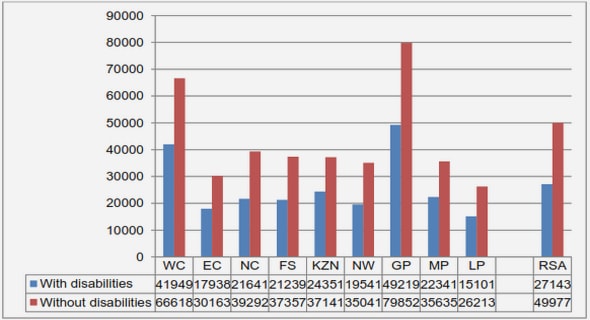(Downloads - 0)
For more info about our services contact : help@bestpfe.com
Table of contents
1 General Introduction
1.1 Redefinition of the kilogram – New SI
1.2 Test of the Standard Model
1.3 New experimental setup for the determination of h/mRb
1.4 Outlook of this manuscript
I The experiment 9
2 Fundamentals
2.1 Stimulated Raman transitions
2.1.1 General considerations
2.1.1.1 Justification of the three level atom
2.1.1.2 Resonance condition
2.1.2 Quantum mechanical description of the coupling
2.1.2.1 Transition probabilities
2.1.2.2 Selection rules
2.1.3 Co- and counter-propagating transitions
2.2 Atom Interferometry
2.2.1 Ramsey sequences
2.2.2 Atom interferometry: Mach-Zehnder configuration
2.2.3 Interferometry in a gravitational field
2.2.3.1 Classical limit
2.2.3.2 Laser phases
2.2.3.3 Perturbative Lagrangians
2.2.4 Ramsey-Bordé in differential velocity sensor configuration
2.2.5 Sensitivity function approach: phase noise transfer function and pulses finite duration corrections
2.2.5.1 Definition
2.2.5.2 Preliminary treatment
2.2.5.3 Pulses finite duration
2.2.6 Conclusion
2.3 Bloch Oscillations
2.3.1 Optical lattice potential
2.3.2 States in a periodic potential
2.3.3 Principle of Bloch Oscillations
2.3.4 Bloch Oscillations in the tight binding regime
2.3.5 Application to the h/m measurement
3 Experimental implementation
3.1 Atomic sample production
3.1.1 Vacuum cell
3.1.2 Atom trapping laser system
3.1.2.1 Cooling laser system
3.1.2.2 Manipulation
3.1.3 Magneto-optical traps
3.1.3.1 Optical molasses operation
3.1.3.2 Residual magnetic field compensation
3.1.4 Absorption imaging
3.1.4.1 Principle
3.1.4.2 Operation
3.1.5 Evaporative cooling
3.2 Interferometry lasers
3.2.1 Amplification and doubling technology
3.2.2 Raman Lasers
3.2.3 Bloch Lasers
3.2.3.1 Relative frequency control
3.2.3.2 Absolute Frequency control
3.2.4 Vertical path description
3.2.5 Interferometry preparation
3.2.6 Frequency stabilization
3.3 Operation of the experimental setup
3.3.1 Sequence programming
3.3.2 Light sheets detection
3.3.3 Operation and characterization
3.3.3.1 Magnetic field measurement
3.3.3.2 Gravity gradient measurement
II Results
4 Atom sources comparison
4.1 Optimization of the Bose Einstein Condensates production process
4.1.1 Sequence for the production of a BEC
4.1.1.1 Dipole trap loading
4.1.1.2 Genetic algorithm
4.1.2 Atom-atom interactions phase shift
4.1.2.1 Spin distillation
4.1.2.2 Microwave-based Ramsey interferometry
4.1.2.3 Interaction in the context of a Ramsey sequence
4.1.2.4 Conclusion
4.2 Resonance mismatch during light pulses
4.2.1 Phase shifts
4.2.1.1 Effect of diagonal terms in the coupling
4.2.1.2 Conclusion
4.2.2 Application to atom interferometry
4.2.2.1 Counterpropagating Raman transitions
4.2.2.2 Effect in a Ramsey-Bordé interferometer
4.2.2.3 Velocity dependence
4.2.2.4 Calibration of the intensity variation
4.2.3 Conclusion
5 Determination of the h/mRb ratio
5.1 Experimental protocol
5.1.1 Gravity elimination
5.1.2 Raman inversion technique
5.1.3 Fringe extraction procedure
5.1.4 Discussion
5.1.5 Raman wavevector variation
5.2 Statistical performance
6 Analysis of systematic effects
6.1 Introduction
6.1.1 General considerations
6.1.2 Description of the trajectories
6.1.2.1 Beginning of the interferometer
6.1.2.2 During the interferometer
6.2 Effect induced by the gradient of gravity
6.3 Effects on the atomic energy levels
6.3.1 Phase shift during Raman pulses
6.3.1.1 One-pulse phase shift
6.3.1.2 One-photon light shifts
6.3.1.3 Two-photon light shifts
6.3.2 Magnetic field inhomogeneities
6.4 Effect induced by the rotation of the Earth
6.5 Effects on the lasers wavevectors
6.5.1 Beams misalignment
6.5.2 Beam profile corrections
6.5.2.1 Ideal gaussian beam
6.5.2.2 Effective wavevector in a distorted wavefront
6.5.2.3 Effect on h/m
6.5.3 Laser frequencies
6.6 Phase shift in Raman radiofrequency chain
6.7 Current error budget and survey of systematic effects
Conclusion and outlooks




